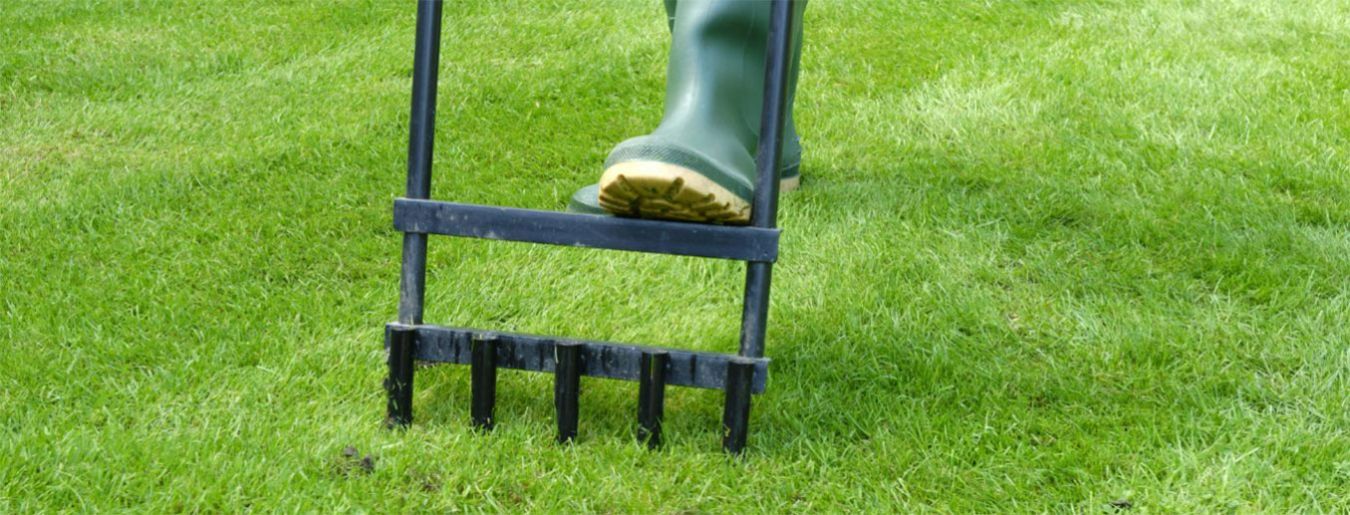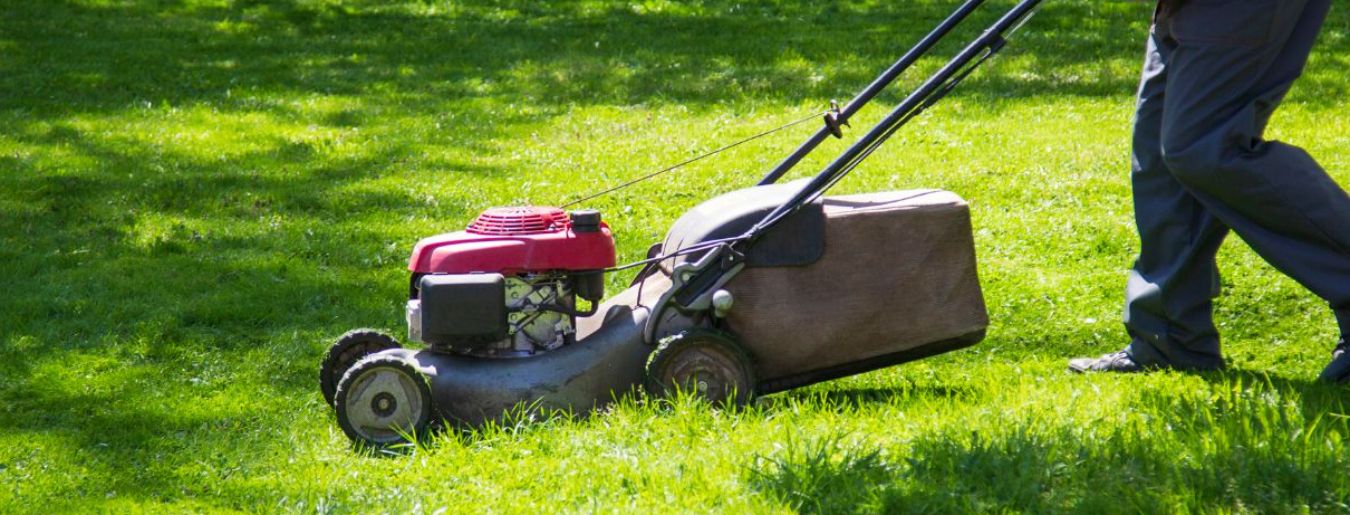Soil aeration is rightfully touted as a way to maintain a lush and healthy lawn, but unseasoned homeowners may not know where to begin. Are manual soil aeration tools sufficient, or is a motor-operated aerator required? Should a lawn be aerated in the spring, summer, or fall? How often is aeration necessary?
Let’s unpack all you need to know about lawn aeration.
What Is Lawn Aeration?
Aeration is the process of creating small holes in the ground to facilitate the permeation of air, water, and nutrients into the soil. Over time, your lawn begins to compress beneath its own weight. The soil becomes compacted and dense, and your grass is deprived of the essential resources it needs to thrive.
Another problem is thatch, or the layer of organic matter that exists between grassy vegetation and the soil. A thin layer of thatch is helpful because it serves to regulate moisture in the soil and insulates roots against erratic temperature movement. But thatch grows thicker year after year as all sorts of living, dead, and decaying plant matter tangle in a dense mat. When thatch grows too thick, it starts to smother the healthy roots in the soil below. Air and nutrients fail to permeate the soil, and water runs off the surface of the ground instead of seeping into the earth.
Aerating a lawn is a simple way of combating the effects of soil compression and thatch buildup. Humans have been aerating soil for thousands of years.

Get Home Warranty Quotes
from Top Rated Authorized
Partners
Get a Quote
Does Aerating a Lawn Really Help?
Lawn aeration is absolutely beneficial. Grasses—and most plants, for that matter—do much better in well-aerated soil because the roots can breathe. Roots respire, just as animals do, and looser soil allows more oxygen to reach the roots. Aerated soil also gives roots better access to essential nutrients, such as potassium, nitrogen, and phosphorus. Water regulation is also improved. Water can permeate looser soil to reach the roots of thirsty plants, and excess water more easily drains in soil that is not compacted.
That said, you may see greater returns after aerating in some locations more than others. Loose, sandy soil may not need to be aerated very often. Dense, clayey soil, on the other hand, will greatly benefit from more frequent aeration.
How Does a Lawn Aerator Work?
There are two main types of aerators. Let’s examine each one.
· Spike Aerators: A tine or spike aerator features a spike-studded roller that punches small holes in the lawn. Some experts argue that spike aerators are ineffective because the holes they create are too small. Detractors also note that a spike aerator can further compress the soil, defeating the purpose of aerating in the first place.
· Core Aerators: A core or plug aerator uses a roller lined with sharp cylinders to pull small plugs of soil from the lawn. Professionals regard core aerators as more effective than spike aerators.
Both spike and core aerators come in manual and power models. A manual lawn aerator is inexpensive, but covering an entire lawn requires time and effort. If you choose to invest in a power aerator, look for a core or plug model.
If you’re the DIY type, it is possible to build your own lawn aerator. Many websites and online videos have instructions for various models, most of which feature heavy-gauge nails studded through a piece of wood, plastic drum, or cylinder of heavy-duty cardboard. Some homeowners have created aerating footwear by driving nails through pieces of wood or plastic and then fastening those to the bottom of a pair of shoes. These DIY aerators can work in a pinch, but they won’t be as effective as a quality core or plug aerator.
When to Aerate Your Lawn
The best time of year to aerate your lawn is dependent on where you live. You don’t want to aerate when grass is dormant. This means that if you live farther north where cool-season grasses are prevalent, you should aerate in the early spring or early fall. Aerate too late in the spring and you’ll damage delicate grass shoots. Aerate too late in the fall and your grass will already be dormant. If you live in a warmer climate, aerate in the late spring or early summer. Avoid aerating during drought conditions.
Consider aerating and dethatching your lawn every year if you have dense clay soil that gets a reasonable amount of traffic from people and mowers. If you live in an area with loose and sandy soil, you probably need to aerate every two to three years.
How to Aerate Your Lawn
If the time is right to aerate your lawn, here are some general steps to follow.
1. Water your lawn a day or two in advance of aerating.
2. On the day you plan to aerate, first mow your lawn.
3. Run your aerator across your lawn in rows. If you’re using a core aerator, you want to pull 20 to 40 plugs per square foot. You may want to give your lawn a second pass. If so, run in rows perpendicular to those of your first pass. You can leave the plugs of soil where they fall.
4. Water your lawn, overseed, and apply lawn food or fertilizer.
Aeration takes a bit of work, but the results are well worth it.




 Prev Post
Prev Post



